Growth is stimulated from a combination of tension , total work , and fatigue . As we'll see in a minute... progressively increasing tension at a given level of work is the primary stimulus for ongoing gains in growth. Factors related to fatigue might add around 10% to that.
1. Tension
To get maximal tension on all available fibers in a given muscle requires full motor recruitment in that muscle. This can occur 2 ways:
A: Lifting a heavy load (80%+) so that all the muscle cells are firing from the first rep. (example: lifting an 80% load for 5 reps)
B: Lifting a light load in a fatigued state so that your muscles "think" the load is heavy. (example: lifting a 50% load with short rest intervals and having the weight feel heavier than your ass after a 5 mile run.)
Any time you put forth a maximal effort and have to really strain to move the weight, regardless of the weight on the bar, all the muscle fibers in the working muscle turn on and "tense" up. This is tension. Get a muscle fiber to tense up often enough in a workout and it gets damaged. Your muscles don't know how much weight they're lifting, they only know they're working. It's not necessarily the weight that induces hypertrophy but the muscles "go through" while lifting the weight.
2. What's the difference between heavy and light loads for tension?
Having said that, there's a difference between lifting a light load in a state of tension that "feels" heavy and one that "is" heavy. The main difference between the 2 is that the heavier load will induce earlier recruitment of the fast twitch fibers and more eccentric microtrauma during the lowering phase of a movement which is the primary stimulus for growth of muscle protein myofibrills, while the lighter load lifted in a state of fatigue, often associated with more repetitions, will tend to induce more growth through increased "energy and water storage" mechanisms.
3. Making strength increases and getting stronger over time is all about is all about increasing tension, while getting a "pump" is more about total work and fatigue. Suffice to say, the heavier you lift with a muscle or muscle group, the more tension you create in that muscle. Your muscles become damaged under tension and repair themselves by getting a little bigger so that they can better resist the load.
4. The "pump"
The more total work and temporary fatigue (due to lack of oxygen), you create in a muscle, (through high volume training, high rep sets, drop sets, static holds, rest-pause, etc.) the bigger the "pump" you tend to get. These methods are highly associated with the "Weider" principles.


 Please Scroll Down to See Forums Below
Please Scroll Down to See Forums Below 











